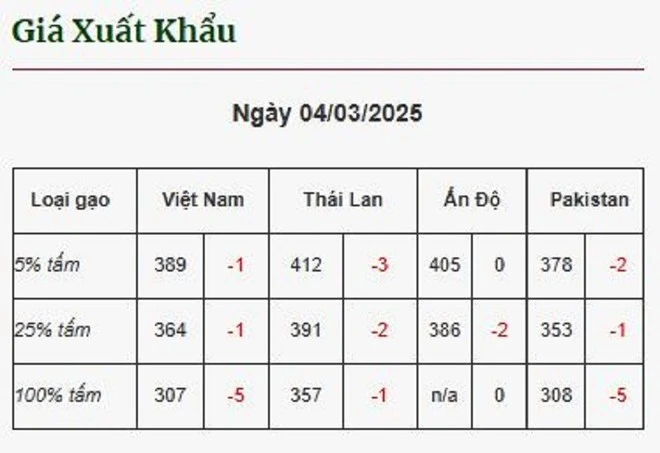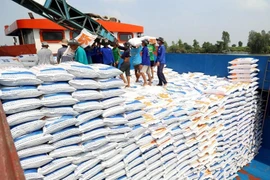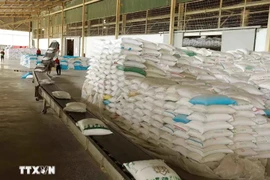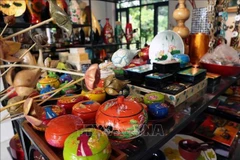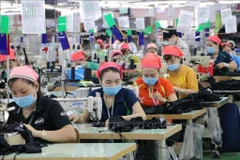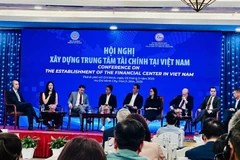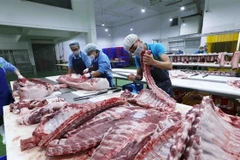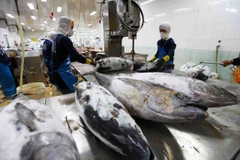Hanoi (VNA) – Rice is one of Vietnam’s key export commodities, contributing significantly to farmers and businesses. However, with increasing competition worldwide, exporters face mounting challenges in maintaining and expanding market share.
Low proportion of high-quality rice exports
In the first two months, the country’s average rice export price stood at 553.6 USD per tonne, an 18.3% decline year-on-year. As of early March, export prices were recorded at 310 USD per tonne for 100% broken rice, 393 USD per tonne for 5% broken rice, and 367 USD per tonne for 25% broken rice.
Vietnamese exporters are encountering growing competition as India lifted its ban on white rice exports in September last year, putting significant pressure on other exporting countries, particularly those in the low-grade white rice segment. Meanwhile, affordable rice from Pakistan and Myanmar continues to dominate price-sensitive markets such as Africa and the Middle East. At the same time, Thailand’s fragrant rice maintains its premium positioning, intensifying competition in the high-quality segment.
The oversupply in the global market has driven prices down, highlighting the urgent need for Vietnam to focus on exporting more high-quality rice. Despite their higher value, premium varieties still account for a small proportion of Vietnam’s overall rice exports.
According to the Ministry of Agriculture and Environment, white rice accounts for 71% of the total rice exports, sold at an average of 523 – 540 USD per tonne, primarily to the Philippines, Indonesia, and Africa. Fragrant rice makes up 19%, fetching 640 – 700 USD per tonne, with key markets including the EU, the US, China, and Japan. Sticky rice accounts for 6%, mainly exported to China, the Philippines, and other Southeast Asian nations. Japonica and other specialty rice varieties represent just 4%, catering to high-end markets such as Japan and the Republic of Korea.
Prioritising high-quality rice varieties
Vietnam’s premium fragrant varieties, such as ST24 and ST25, have already made a mark on the global stage. However, expanding the portfolio of high-quality rice is crucial. Research and development of high-yield rice varieties that are resistant to pests, adaptable to climate change, and suitable to consumer taste must be prioritised.
In addition, scientific advancements should be integrated into breeding processes to ensure consistent quality, aroma, and nutritional value. Strict quality control is essential to prevent genetic mixing, safeguarding the reputation of Vietnamese rice.
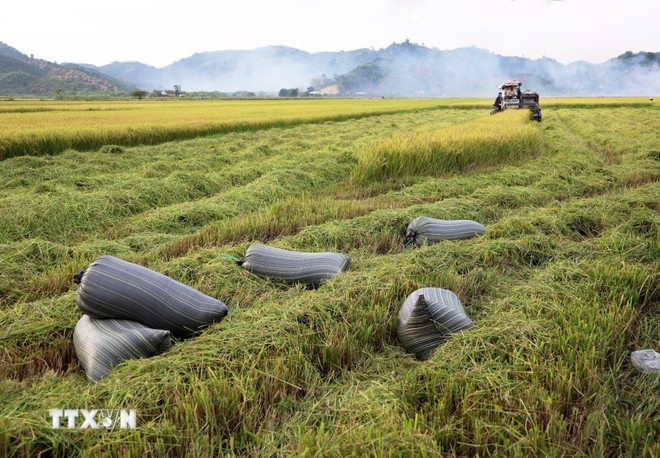
At a conference on rice market stability held by the Ministry of Agriculture and Environment on March 4, Minister Do Duc Duy remarked that overcoming current challenges and ensuring sustainable growth of the sector require production restructuring and quality improvement, particularly a stronger shift towards high-quality rice products.
For expanded farming areas with more crops, priority should be given to high-quality varieties. The ministry will continue implementing its project on forming 1 million ha of high-quality and low-emission rice cultivation, and develop drought-, salt- and disease-resistant varieties to respond to climate change, he noted.
Duy also stressed the importance of developing a strong, sustainable, and eco-friendly rice brand. “Alongside branding efforts, we must focus on demanding yet highly potential markets such as Japan, the EU, and the US. They may have not yet generate large export value, but offer stability and are less affected by global price fluctuations,” he stated.
In his dispatch issued on March 4, Prime Minister Pham Minh Chinh instructed the Ministry of Agriculture and Environment to improve rice production structures and enhance product quality. The directive calls for a greater emphasis on high-value and specialty varieties, modern technology applications, and research investments to develop climate-resilient strains.
Enhancing Vietnam’s competitiveness in the rice sector is a long-term endeavour requiring commitment from all stakeholders. From farmers and exporters to policymakers, collective efforts are needed to build a modern and sustainable rice industry capable of making a lasting impact on the global market. The grain is more than just an essential food source, it represents national pride and the country’s standing in the global food industry./.
